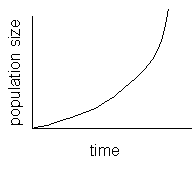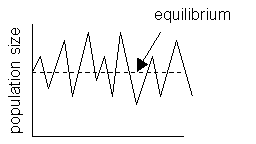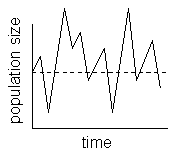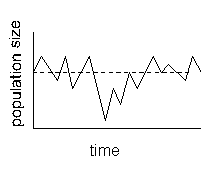|
DIMENSIONS: ecosystem |
Concepts: Population Limitation, Stability, EquilibriumPopulation limitationIn the absence of limitation, a population has the potential to multiply and grow at an exponential rate (Fig. 1). However, an animal population without limitation is rare. In time, the population will reach a point where they begin to stabilize, or become regulated by density dependent factors. Density dependent factors are environmental factors that limit the population when it reaches a certain density. Some examples of density dependent factors that elk in Yellowstone experience are:
Populations also can be limited, or regulated, by density independent factors, such as:
The level where a population becomes regulated and levels off is called the carrying capacity (K). This type of population growth is called logistic growth (Fig. 2). The National Park Service’s policy of natural regulation is based on these concepts. The idea is that, when left alone, a population will naturally regulate itself around its carrying capacity due to density dependent and independent factors.
Stability and EquilibriumWhen a population reaches its carrying capacity (K), it doesn’t stay exactly at it. Yearly abundances may fluctuate due to environmental influences. For example, a severe winter may result in a dramatic decrease in elk population, while a mild winter may result in an increase in population size. When a population experiences fluctuations and returns to K, also known as equilibrium, it is considered stable. For example, the animal in Figure 3 fluctuates through time, but it usually stays within range of its equilibrium. The animal in Figure 4 fluctuates highly and does not appear to return to an equilibrium point.
Local vs. Global StabilityA population is considered locally stable if it experiences small fluctuations in abundance and is able to return back to normal, or equilibrium (Fig. 5). For example, each winter, elk experience losses in abundance due to natural winter mortality. But each spring, new births replace those lost and the population returns to normal. A population is globally stable if, after an event causes an extreme reduction in abundance, the population is able to return to equilibrium (Fig 6). For example, the winter in 1988 in Yellowstone was substantially colder than average and had higher then average snowfall. The impact of this severe winter resulted in dramatic die-off of elk. However, within years they were able to recover and abundance returned to normal.
|





